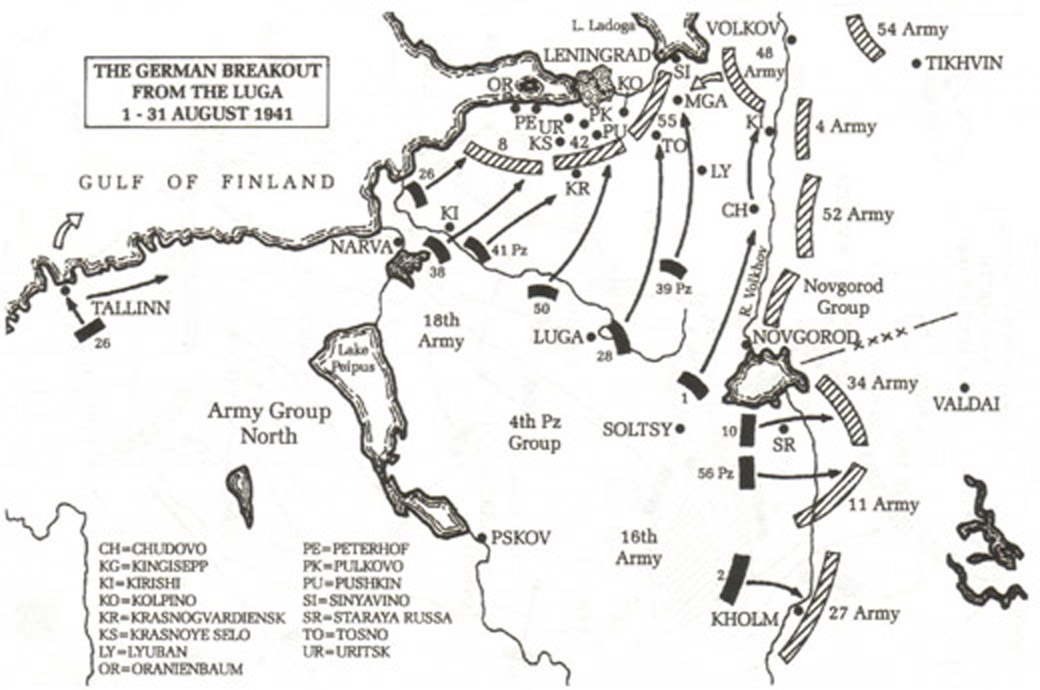Air Operations, Mediterranean
The British carry out air raids on Catania and Syracuse. Italian sources say that 18 are killed and 25 injured in Catania.
[Atlantic
During the next week, 8 German and 3 Italian submarines make repeated, but unsuccessful, attempts to attack Convoy HG-69 northwest of Gibraltar.
[Diplomatic Relations
- Stalin broadcasts his acceptance of a proposed meeting in Moscow with Churchill and Roosevelt.
- The British and Soviet government send a protest note about German infiltration of Iran.
Eastern Front
NORTHERN SECTORThe Soviet Luga line has been shattered by the XLI and the LVI Panzer Corps, forcing the Red Army to abandon Kingisepp and retreat to Garchina. The German I and the XXVIII Corps force the 48th Army out of Novgorod.
German Plan to Break the Luga Line |
 |
The newly formed Soviet Bryansk Front engages in heavy fighting with the 2nd Panzer Group and the 2nd Army in the areas or Konotop and Chernigov.
SOUTHERN SECTORBudenny signals the Stavka that he requires the re-adjustment of the line in order to prevent the destruction of his armies. He recommends the withdrawal of the right wing and formation of a front reserve. Stalin in turn orders the withdrawal of all Southwest Front units behind the line of the Dniepr, with the exception of Vlassov's 37th Army, which is to cover the approaches to Kiev between Loyev and Perevochna. Potapov's 5th Army, isolated in the Pripet Marshes, is also to fall back across the Dniepr and Desna Rivers to rejoin the main combat line.
[Soviet Union, Strategy
On receiving news from Budenny about his perilous position, Stalin orders the Southwestern Front to withdraw behind the Dnieper, except the 37th Army, which will protect the approaches to Kiev.
[